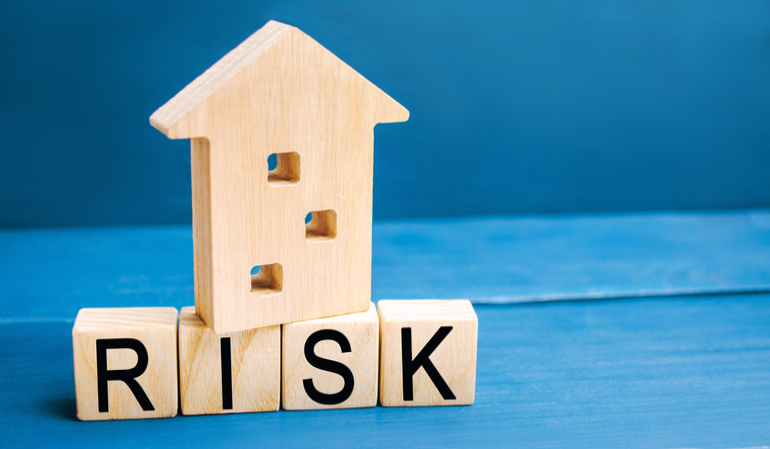Investing in real estate such as multifamily properties can be a great way to hedge against the risk of a stock market crash, but real estate still carries several risks of its own that need to be managed. As investors learned during the Great Recession a decade ago, homebuyers can overextend themselves on mortgages, thereby causing defaults, and even recession-resilient assets like multifamily real estate units carry a variety of risks.
As such, physicians, dentists and other doctors who want to get the most out of real estate investing without having to become experts themselves should consider the following three real estate risk management strategies:
1. Diversify portfolios
Diversification can be a great real estate risk management strategy as well as an overall investing risk management strategy. That’s because if one area does not perform as expected, the others might perform better to still lead to overall success, similar to how a doctor might simultaneously try multiple treatments such as medication and therapy for an illness. Diversification can also help investors reap the benefits of different markets, similar to how diversifying the foods eaten in a diet can help people get exposure to different nutrients.As such, investors should consider holding several different types of assets, such as stocks, bonds and real estate. In this case, assets such as bonds and rental properties could provide monthly income while stocks appreciate in value over time, even if there are ups and downs along the way.
More specifically, risk management strategies in real estate can include diversifying among different markets and property types. For example, investing in multifamily buildings in one growing city, may seem smart, but if that’s your only area of investment, you’d be putting yourself at risk; if the real estate market crashes there, your entire portfolio could drop. Yet if you diversify your investments across multiple cities, you’d be more likely to stomach a crash in one city, particularly if residents in one area flock toward another that you’re invested in.
Real estate risk management strategies regarding diversification can also include investing in multiple property types such as recession-resilient asset classes like multifamily housing, self-storage and discount retail, alongside other types of real estate such as single-family homes, industrial properties and others. Some assets like multifamily housing can even have built-in diversification, such as if the property has a large number of tenants to mitigate against the risk of some being late on rent.
Want to learn more about real estate investing? Connect with our team of specialists today!
2. Conduct due diligence before investing
A good practice for any investment, but particularly as part of real estate risk management, is to conduct due diligence to make sure you know exactly what you’re putting your money into. With investments such as publicly traded stocks, it can be easy to conduct due diligence such as looking at financial statements, but information on private investments like some real estate properties can be a little more difficult to come by.
However, the time it takes to review properties and make sure you’re investing your money as intended tends to be worth it. Research from Fundify on angel investments in private equity, as reported in Institutional Investor, found that 69% of investments that were made after conducting one hour or less of due diligence lost money, whereas 58% of deals with over 40 hours of due diligence research made money.
Risk management strategies in real estate regarding due diligence can include steps such as physically looking at the property you’re investing in to make sure you’re not putting your money into something that looks great in pictures but falls short in person. Investors can also take more detailed steps such as looking at zoning records and building history to try to minimize compliance risk and maintenance risk, and there are a variety of checklists available online depending on your investment type.
However, doctors may not have the time and real estate expertise to conduct every aspect of due diligence, so it’s important to work with partners that you trust to fully investigate properties before investing in them. Yet even if a real estate investment firm handles the due diligence for you, you should conduct your own due diligence on the investment company itself to make sure they have a solid reputation and record.
3. Hire Professionals to Manage the Ins and Outs of Owning Real Estate
In addition to working with partners you trust to conduct due diligence, it’s also a good real estate risk management strategy to hire professionals to handle all the little details that go into owning properties.
From property maintenance to security to marketing, there are a lot of moving parts in real estate, and if left unmanaged they can derail investments. For example, inadequate security can lead to expensive lawsuits and/or a decline in reputation that causes renters to avoid choosing your building, which ultimately hurts investment returns. Similarly, inadequate property maintenance in a building can cause renters to choose competitors, thereby limiting the occupancy rate and ultimately hurting returns.
As an investor, especially if you’re a high-income professional like a doctor who’s simply looking for a return on your investment rather than taking on real estate management as a full-time job, it often makes sense to hire professionals to handle the various aspects that go into owning properties.
Look to partner with real estate investment firms that recognize what they’re good at and who turn to other hired professionals to fill in expertise gaps to get the most out of investments, rather than taking on the risk and burden of handling everything internally. For example, an investment company may know how to conduct due diligence on a property but may not know the best way to get Millennials in Phoenix to rent an apartment in their building. Hiring a marketing firm to help in this regard can limit the risk of investing in a building with a high vacancy rate.
No investment is without risk, but by following these three real estate risk management strategies, you can reduce unnecessary risk and potentially gain higher returns. If you’re still unsure as to whether real estate investing is too risky, you may benefit from speaking with a professional real estate investor to better understand how different investment options can match your risk tolerance.




